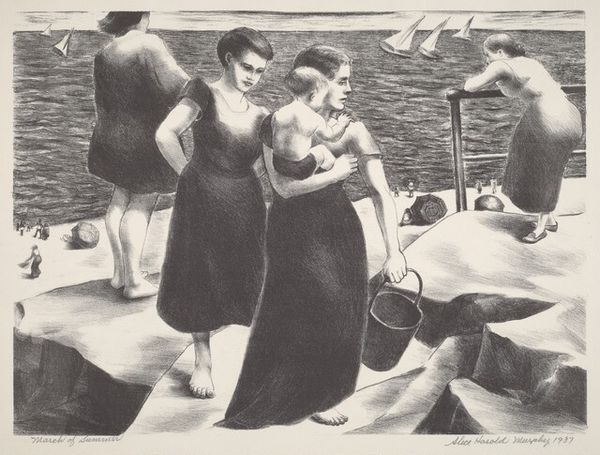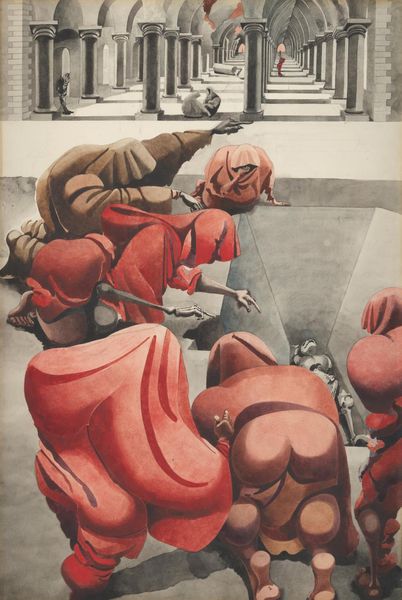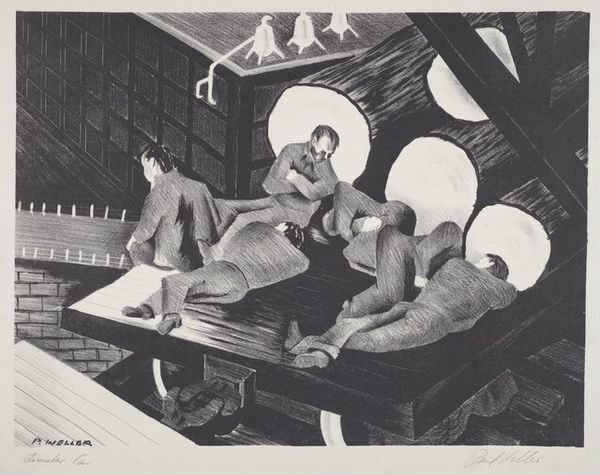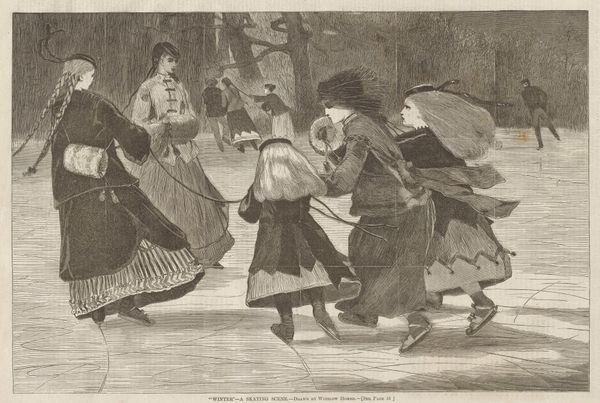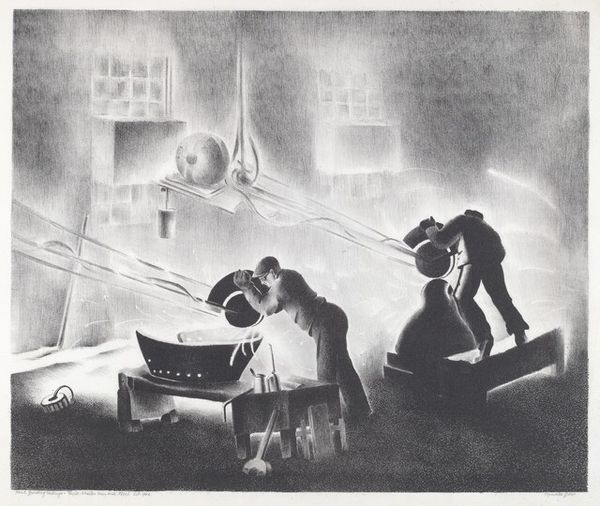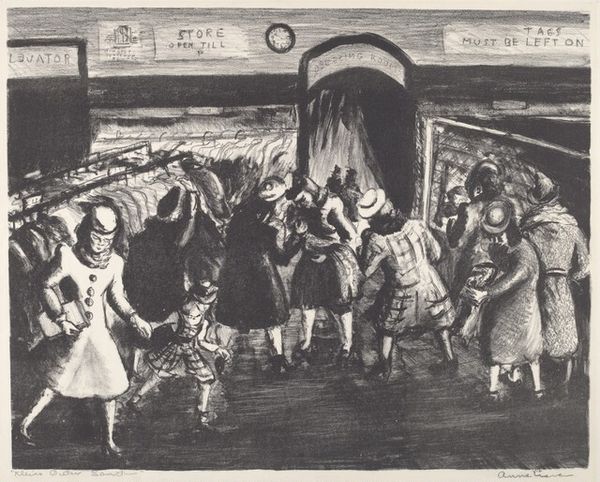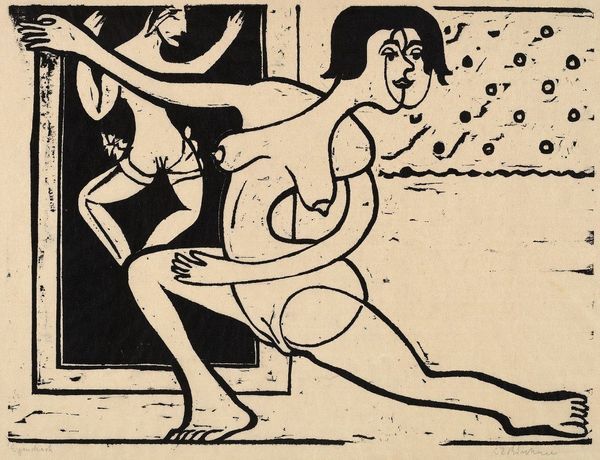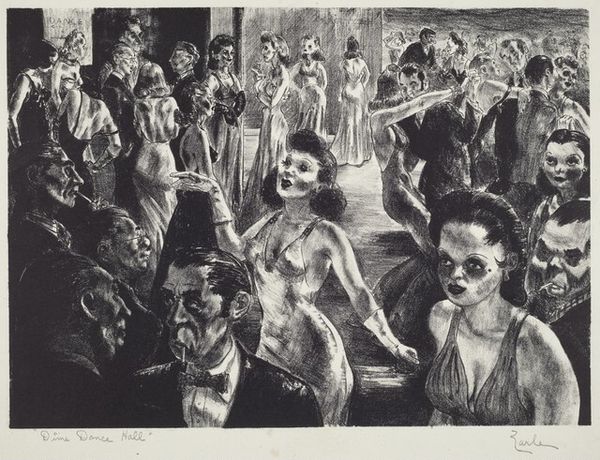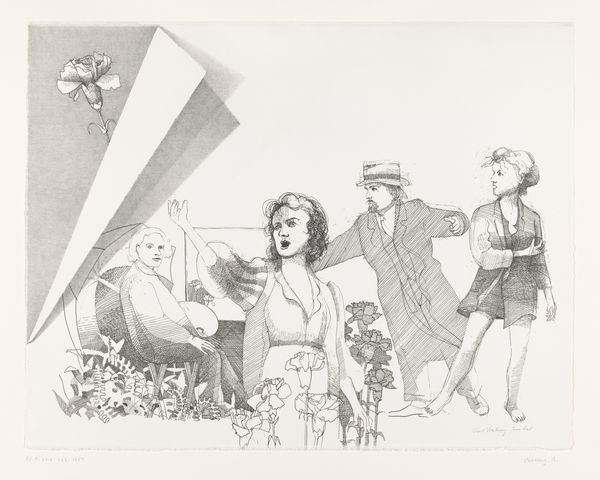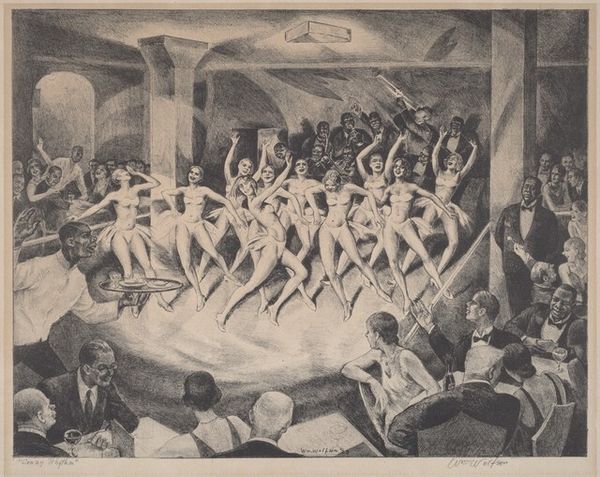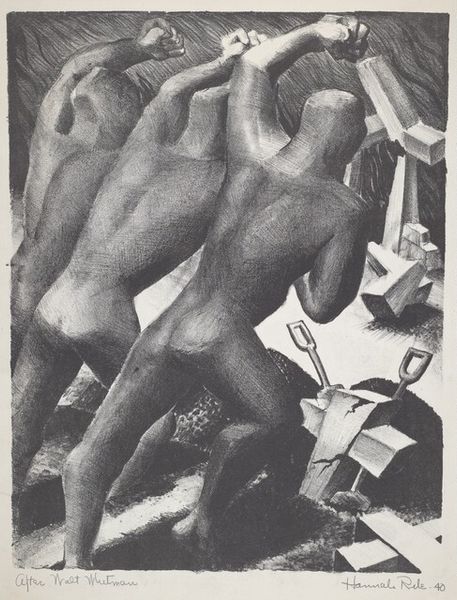
lithograph, print
#
lithograph
# print
#
cityscape
#
genre-painting
#
modernism
#
realism
Dimensions: image: 281 x 392 mm sheet: 403 x 578 mm
Copyright: National Gallery of Art: CC0 1.0
Editor: This is Bernard Joseph Steffen's "Windy Day," a lithograph from sometime between 1935 and 1943. I'm really struck by how the artist uses contrasting textures to convey movement. It almost feels like the wind is physically pushing these figures around. What stands out to you? Curator: Precisely. The dynamism inherent in the subject matter is deftly translated into formal elements. Observe the density of the linework, particularly in the lower half and near the group of pedestrians; the closely packed strokes imply the force of the wind, almost a tactile representation of resistance. What does this contrast, specifically between textures, imply to you? Editor: I see. The smooth, almost blank faces seem to fade against the active umbrellas and frantic rain. Is it about contrasting internal and external states? Curator: An interesting hypothesis, and perhaps supportable. Consider the composition overall. Steffen's arrangement leads the eye diagonally, from the bottom left to the upper right. What effect does that diagonal dynamic have? Editor: It gives me a sense of imbalance, a feeling of being off-kilter, like you might actually experience on a windy day! I also see that the darker values and denser marks near the upper right feel almost overwhelming. Curator: Indeed, that cluster serves as a focal point but through density rather than sharp focus. By reducing the facial details, Steffen encourages a reading of these figures as shapes caught in a gust rather than specific individuals. Did you find that you gained something of substance from our analysis? Editor: Yes, definitely. I came in just thinking it captured movement, but now I understand how Steffen uses visual cues to accomplish so much more than depicting a simple, windy day! Thanks!
Comments
No comments
Be the first to comment and join the conversation on the ultimate creative platform.
